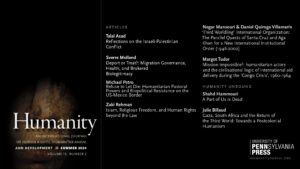Abstract: In “The Beautiful Guantánamo,” Mansoor Adayfi, who was imprisoned for fourteen years there without charge, refutes the narratives and images carefully curated by the US government about its captives. Adayfi describes how men and boys speaking eighteen different languages and representing fifty nationalities shared their different cultures with one another and, through communal experiences, generated their own distinctive Guantánamo culture from 2002 to 2010. Beginning with the fear, estrangement, and abuse prisoners experienced upon their arrival, the author details how forming a common language and traditions in greetings, poetry, song, and dance created a brotherhood among those held and helped them to survive. From learning how to greet one another in their own languages to devising classes and cultural competitions, the prisoners forged a unique set of cultural practices to sustain themselves. The essay demonstrates how Guantánamo culture evolved as a mode of communication, self-expression, resistance, and survival and, in the process, as the author writes, ensured prisoners held on to the humanity that the prison sought to destroy.
This content is restricted to site members. If you are an existing user, please login. New users may click here to subscribe.
Current Issue

📘'Choose Your Bearing: Édouard Glissant, Human Rights and Decolonial Ethics' is now available for pre-order!
❕Grab your copy and save 30% OFF using the code NEW30 at checkout : https://edin.ac/3JIcRne
@HumanityJ
Login Status
If you are not a subscriber, you can sign up now.